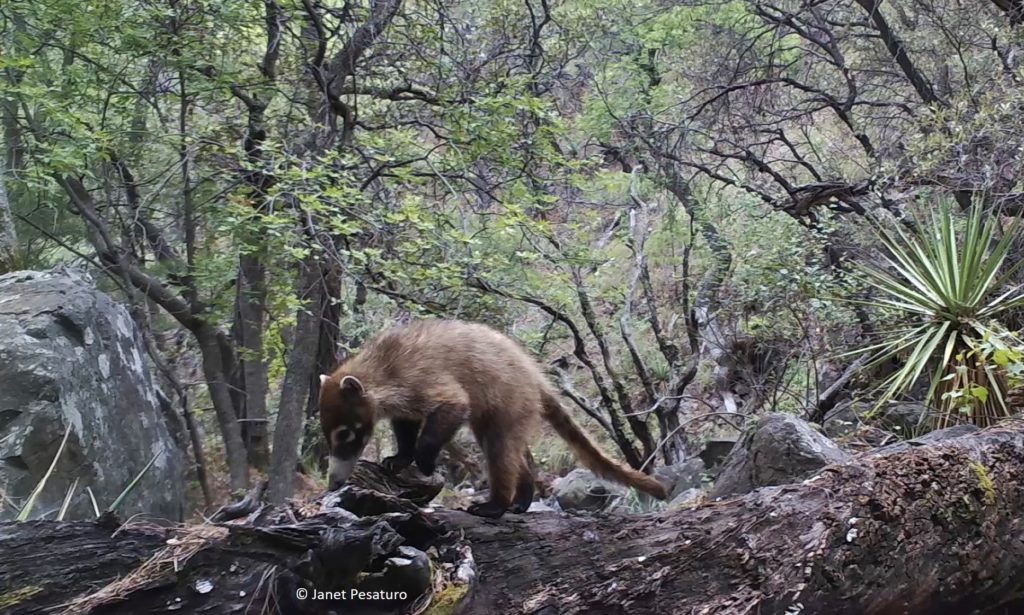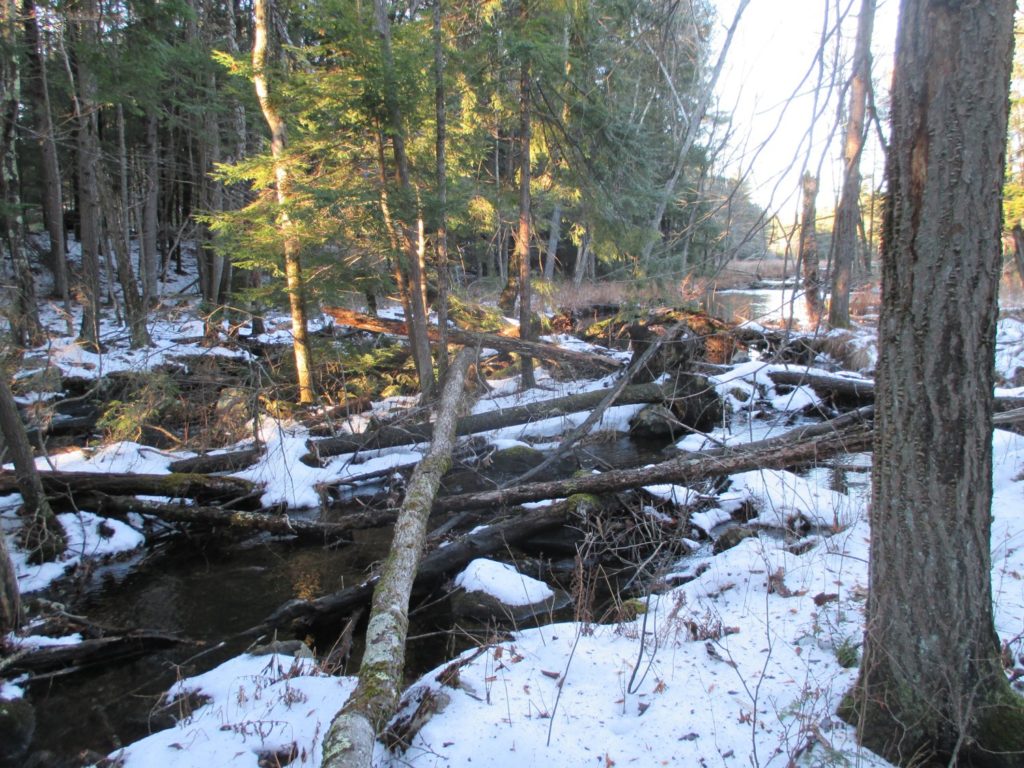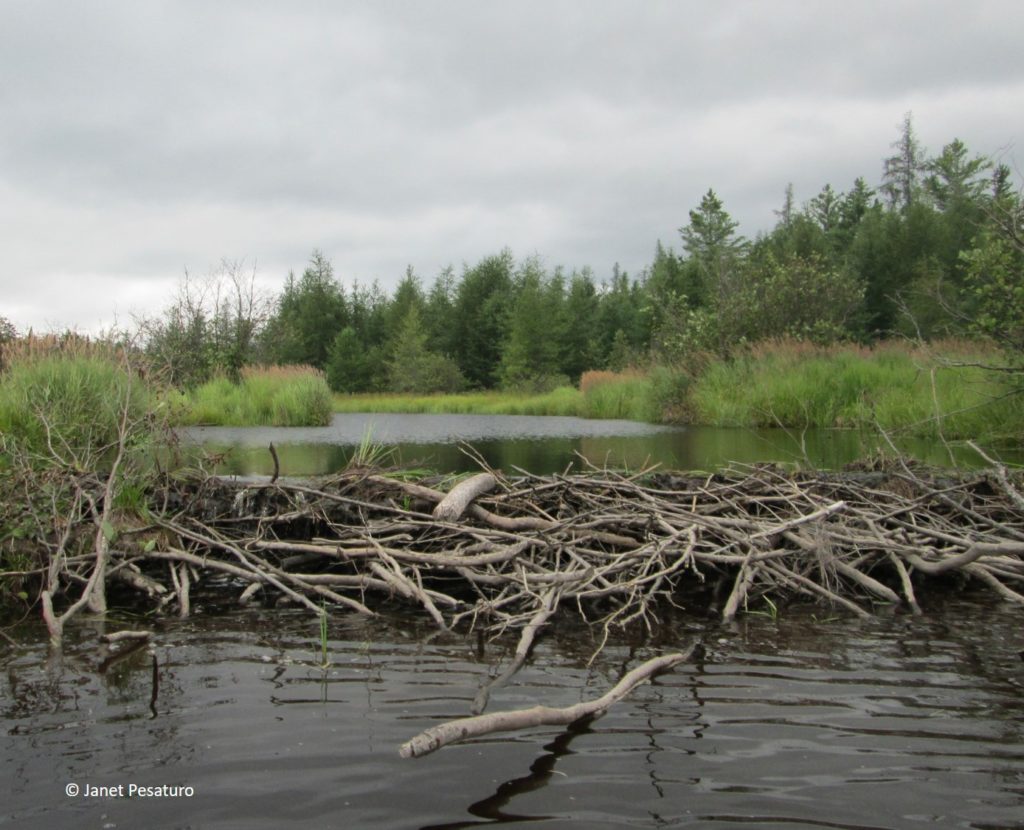Choosing a Good “Bridge” for a Trail Camera

One type of productive spot for a trail camera is a pinch point, a place where landscape features force animal travel through a narrow area. The floor of a narrow, steep-walled canyon, a trail through dense vegetation, and a natural bridge, such as a beaver dam or a log over water, can all be considered pinch points, of sorts. Any of those can be great spots for a camera trap, but here I will focus on natural bridges and provide examples to illustrate several points. There are 3 characteristics which make a natural bridge attractive to a variety of wildlife:
- It should be the only good option in the area for crossing the water.
- It should be wide enough to accommodate large animals.
- It should span a body of water that is too wide for most animals to easily leap across.
Take a look at the photo below. Are any of the logs likely to be used frequently by a variety of animals? Probably not, because the logs are fairly thin so only small to medium size animals are likely to use them. And, there are too many logs and some narrow points along the stream. When animals have multiple options, you will see only some of their crossings at any given log. To get more of the wildlife action at this site, a camera could be set back for a landscape view, but that’s not helpful if the goal is nice, crisp photos of animals.

The trail cam video below (from Massachusetts) shows animal travel on a 6-8 inch diameter log spanning a fairly wide stream, wider than most animals would attempt to leap. It is well-used, but the largest animal using it is a raccoon. Small species like squirrels, weasels, and mink account for most of the action.
The next photo shows a much thicker log spanning a stream. Because it is the only one in the area, many of the animals, both large and small, who need to cross the stream will choose to walk on that log. This is a fairly good choice for a trail camera, but the stream is narrow enough so that some animals will choose to leap across.

Next is a trail camera video of animals in Arizona using a log to cross a deep stream bed. This crossing is similar to the one in the above photo. It is thick enough to invite large animals but the stream is not terribly wide. It is used by coatis, bears, and squirrels. The size range is good, but there isn’t a lot of diversity. I suspect that the bobcats and mountain lions, which are common in that part of Arizona, choose to leap across at various points along the stream.
Now look at the beaver dam in the following photo. It’s long and thick – a perfect wildlife bridge. It can be used by animals of any size, the water body is too wide for any animal to leap across, and there is no place else nearby to cross.

Finally, here’s a video from a trail camera stationed at the end of a similar long, thick beaver dam. Bears, bobcats, coyotes, deer, and raccoons use it as a crossing structure, and other species are attracted to it for other reasons. Otters, in particular, often haul out and create latrines near beaver dams.
What has been your experience with camera trapping at crossing structures? Feel free to share your experiences, thoughts, and questions in the comment section.

Wonderful and Educational Videos 🙂 Thank You for sharing 🙂
I’m glad you found it useful, Marilyn!
Good post. I can confirm your comments on the selection of a good bridge log. Years ago I had a camera trap placed to overlook a remote log for several weeks and got photos of raccoons, gray squirrels and fisher. But the site took too long to reach so the camera was removed.
More recently I had one at another log; the results are in this post — https://forestandfield.blogspot.com/2017/09/porky-log.html There wasn’t a really suitable tree to mount the camera on and there were too many alternative crossing logs so hte results were disappointing.
Just read your post at that link – you actually got some nice results! You’re probably right that the bears were using another nearby log, and maybe a fisher was doing that, too. Interestingly, I’ve never actually gotten a fisher at any log crossing or beaver dam. They must use them, but maybe less commonly than a lot of other species.
Pingback:Trail Camera Placement at Stream
Pingback:Bobcat Scratching Posts and Logs - Winterberry Wildlife
Pingback:Grizzly Bear Root Grubbing: Foraging Sign, Favored Plants, Site Selection - Winterberry Wildlife